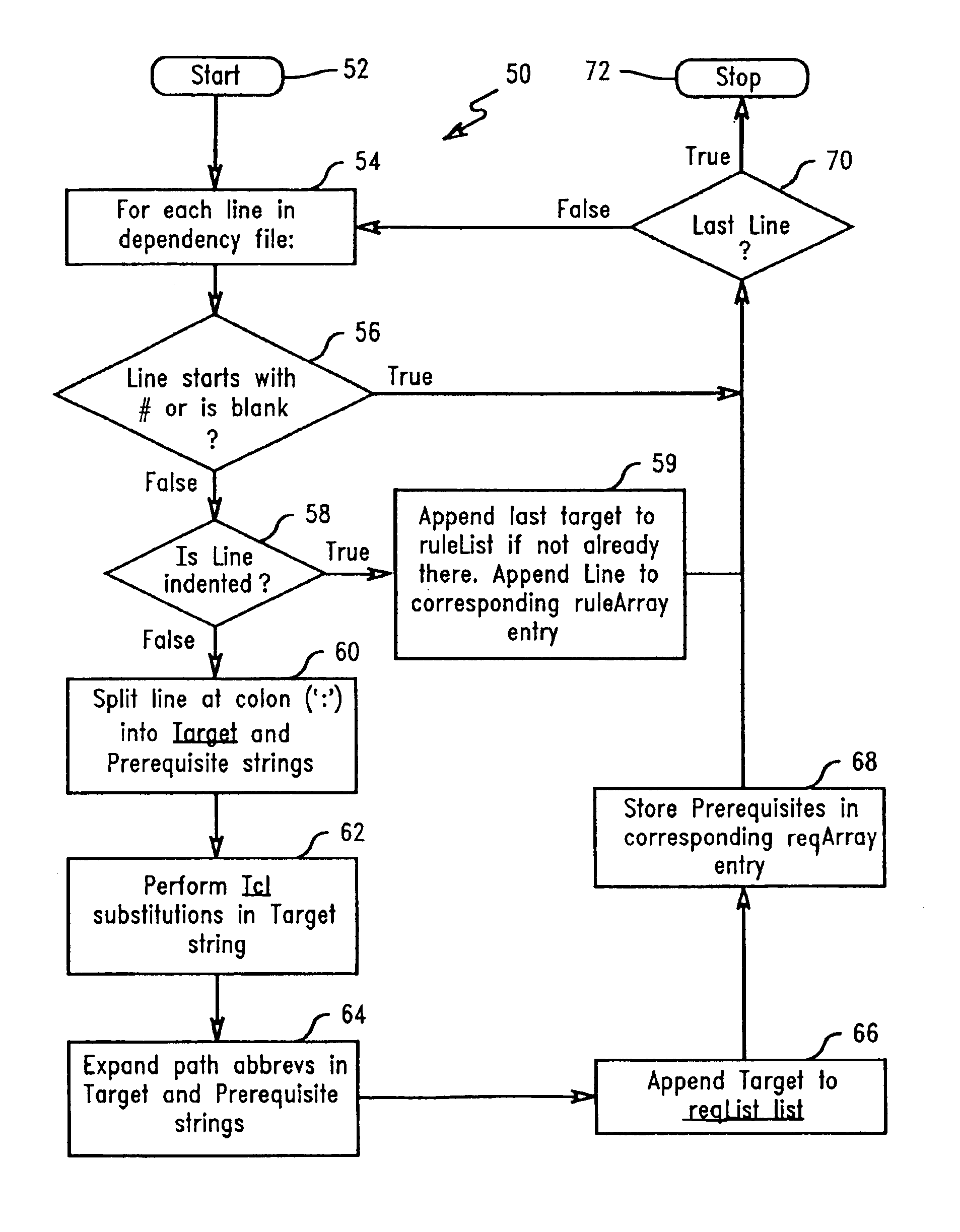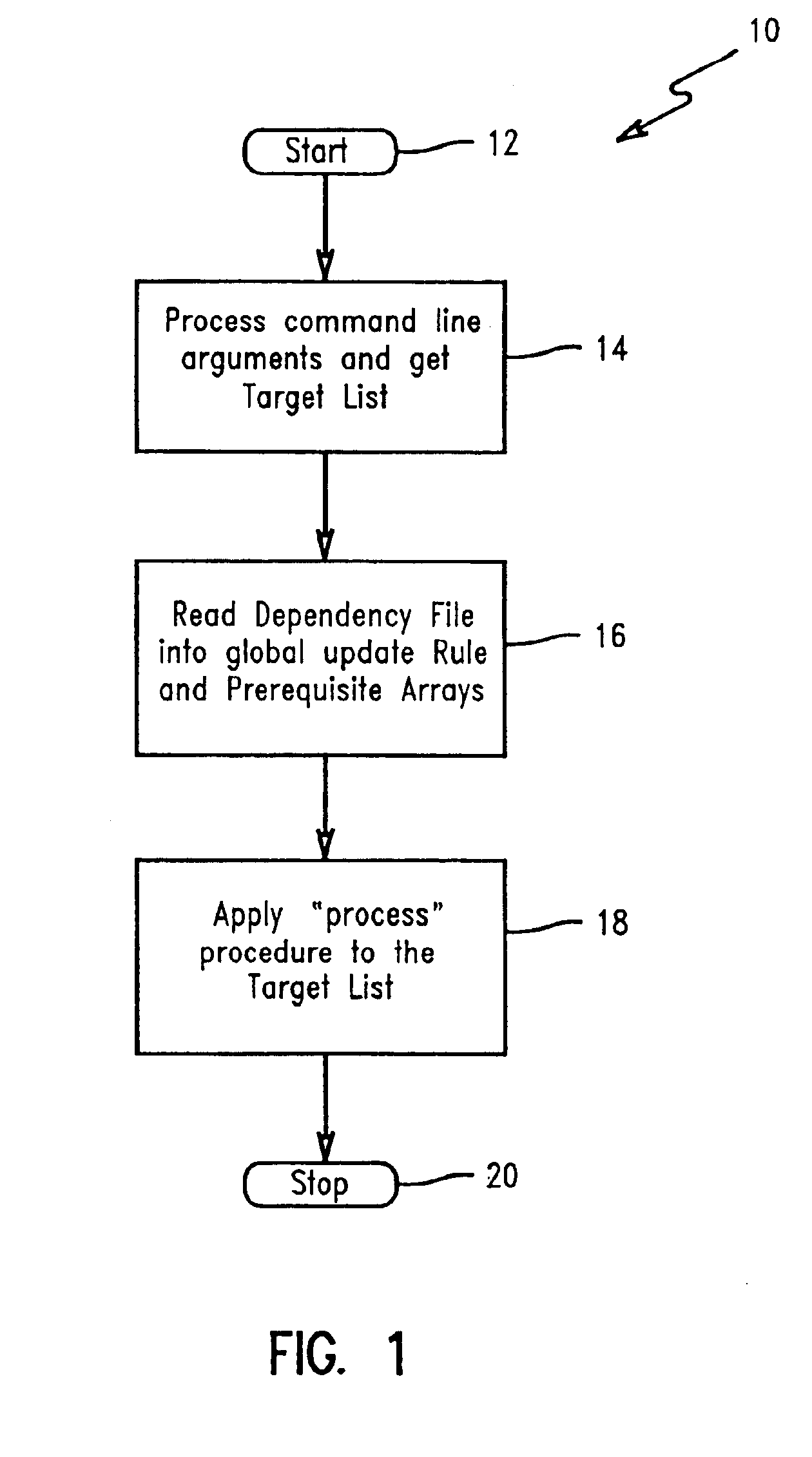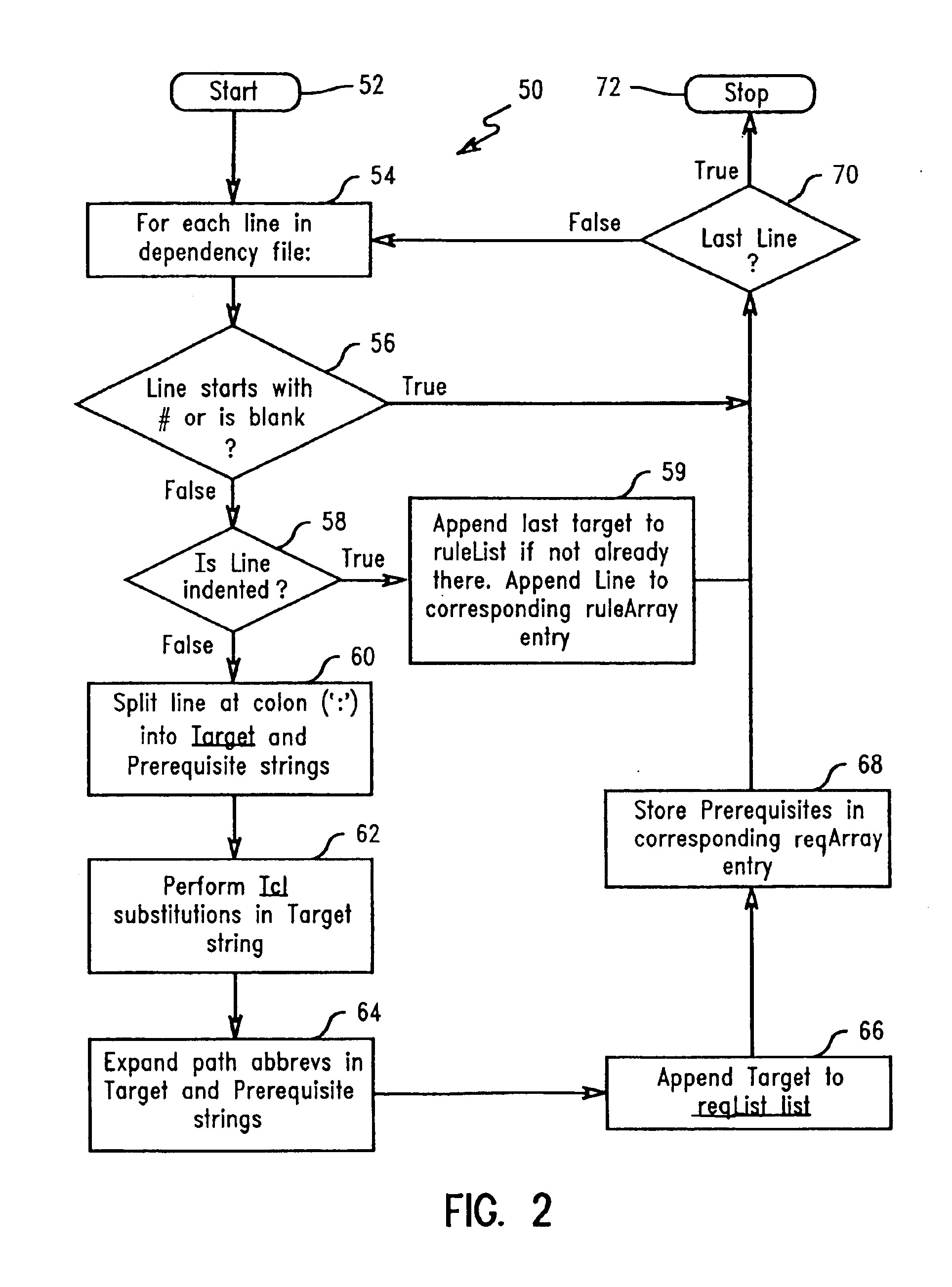Dependency specification using target patterns
a target pattern and dependency specification technology, applied in the field of source code and object code update, can solve the problems of increasing the complexity of the program, the difficulty of finding target files, and the difficulty of locating source files, so as to achieve the effect of finding target files
- Summary
- Abstract
- Description
- Claims
- Application Information
AI Technical Summary
Benefits of technology
Problems solved by technology
Method used
Image
Examples
Embodiment Construction
)
[0042]In describing the preferred embodiment of the present invention, reference will be made herein to FIGS. 1-4 of the drawings in which like numerals refer to like features of the invention. Features of the invention are not necessarily shown to scale in the drawings.
[0043]The present invention discloses using target patterns to provide a concise way to specify entire classes of dependencies. This method can replace many concrete (non-pattern-specific) rules in a build control file such as the makefile disclosed in the prior art. Other prior art methods use algorithms to build a complete concrete dependency tree before the utility starts. The present invention builds a pattern-based dependency tree instead, which can be done in minimal time without operating system calls. Further, the present invention determines which files match the patterns as needed, thus saving time and computer resources.
[0044]Referring to FIG. 1, a top-level flow chart is shown disclosing the present inve...
PUM
 Login to View More
Login to View More Abstract
Description
Claims
Application Information
 Login to View More
Login to View More - R&D
- Intellectual Property
- Life Sciences
- Materials
- Tech Scout
- Unparalleled Data Quality
- Higher Quality Content
- 60% Fewer Hallucinations
Browse by: Latest US Patents, China's latest patents, Technical Efficacy Thesaurus, Application Domain, Technology Topic, Popular Technical Reports.
© 2025 PatSnap. All rights reserved.Legal|Privacy policy|Modern Slavery Act Transparency Statement|Sitemap|About US| Contact US: help@patsnap.com



